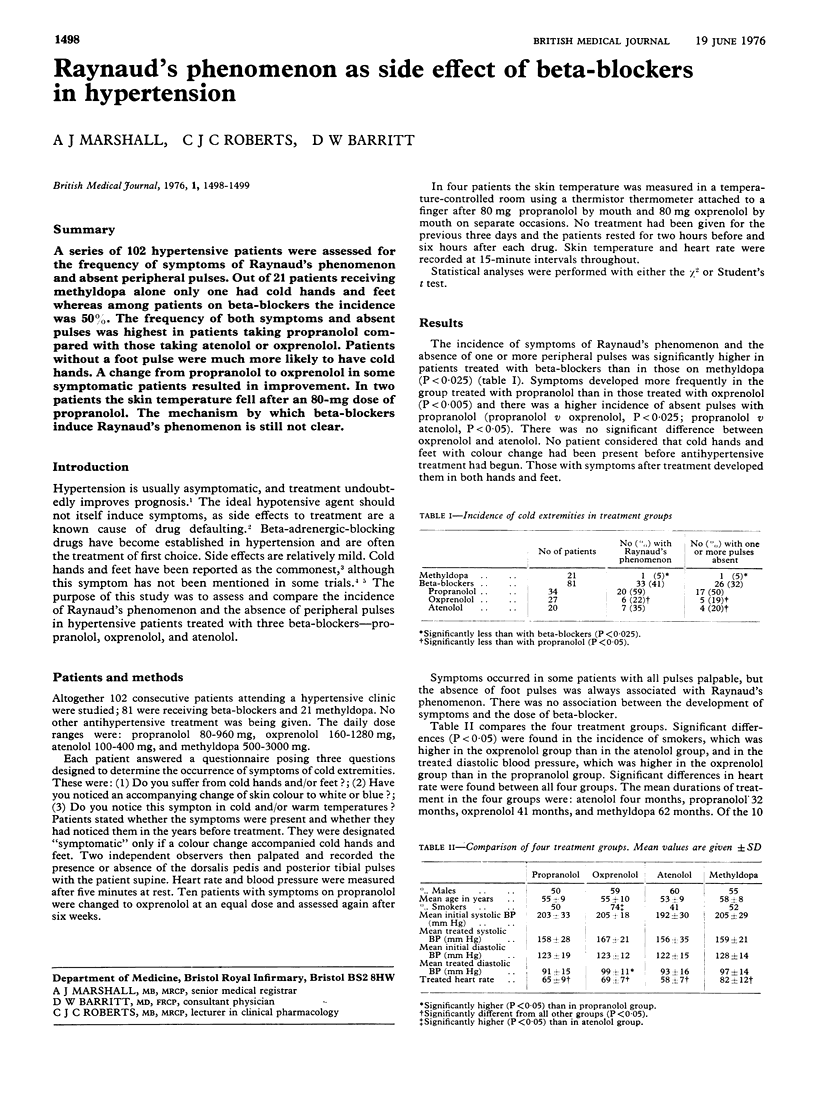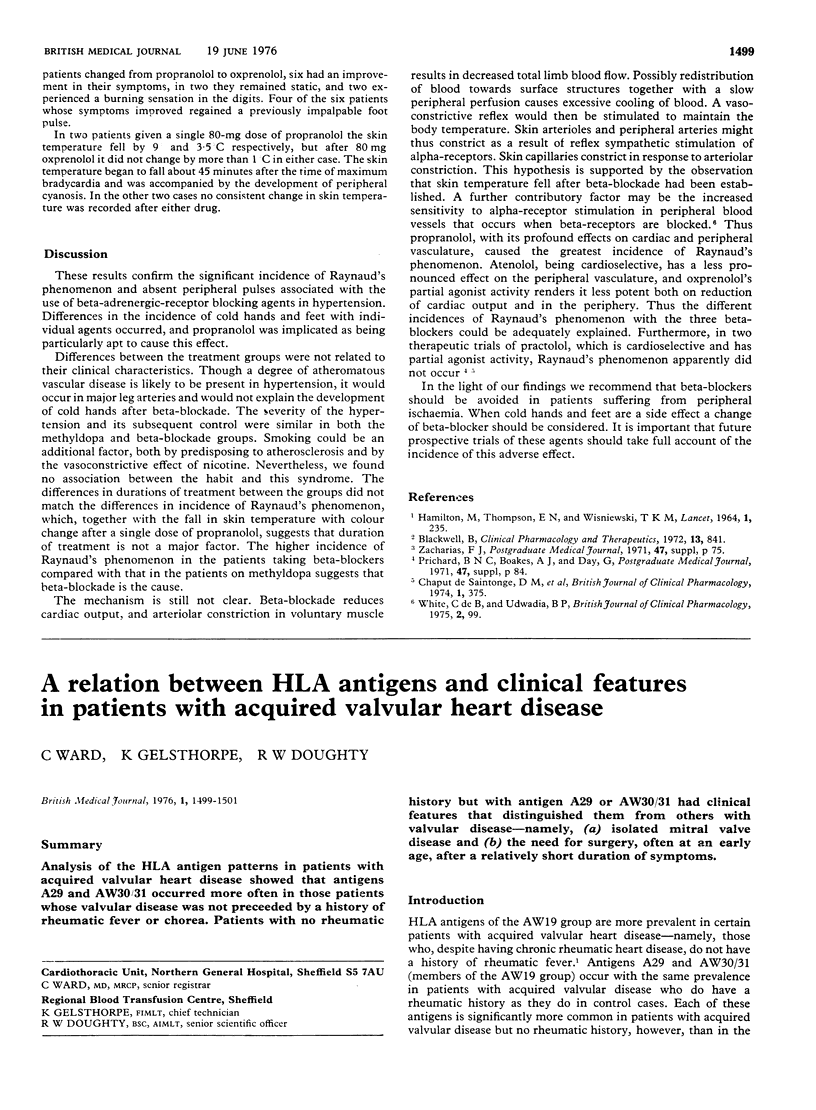Abstract
A series of 102 hypertensive patients were assessed for the frequency of symptoms of Raynaud's phenomenon and absent peripheral pulses. Out of 21 patients receiving methyldopa alone only one had cold hands and feet whereas among patients on beta-blockers the incidence was 50%. The frequency of both symptoms and absent pulses was highest in patients taking propranolol compared with those taking atenolol or oxprenolol. Patients without a foot pulse were much more likely to have cold hands. A change from propranolol to oxprenolol in some symptomatic patients resulted in improvement. In two patients the skin temperature fell after an 80-mg dose of propranolol. The mechanism by which beta-blockers induce Raynaud's phenomenon is still not clear.
Full text
PDF

Selected References
These references are in PubMed. This may not be the complete list of references from this article.
- Blackwell B. The drug defaulter. Clin Pharmacol Ther. 1972 Nov-Dec;13(6):841–848. doi: 10.1002/cpt1972135part2841. [DOI] [PubMed] [Google Scholar]
- White C. B., Udwadia B. P. Beta-adrenoceptors in the human dorsal hand vein, and the effects of propranolol and practolol on venous sensitivity to noradrenaline. Br J Clin Pharmacol. 1975 Apr;2(2):99–105. doi: 10.1111/j.1365-2125.1975.tb01564.x. [DOI] [PMC free article] [PubMed] [Google Scholar]


